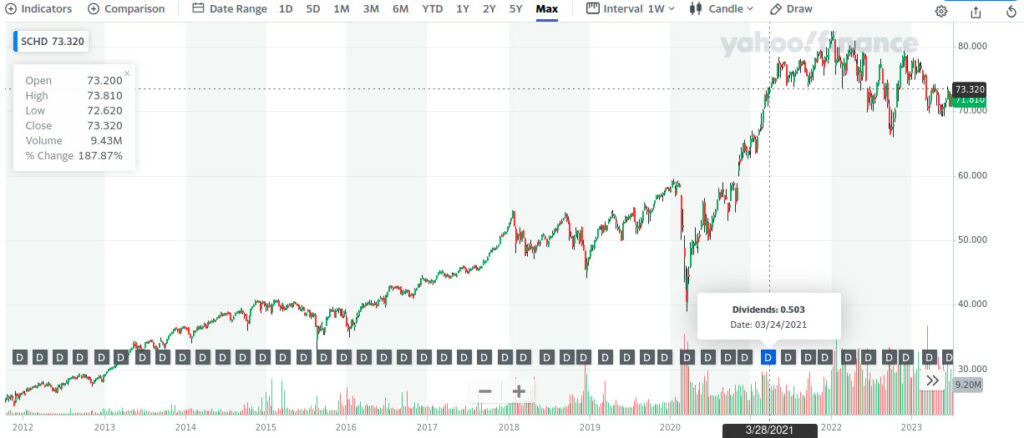Investing in real estate can be a lucrative venture, offering numerous opportunities for financial growth and stability. One popular option is investing in single-family homes. These properties have their own unique advantages and considerations that make them an appealing choice for many investors. In this article, we will explore whether investing in single-family homes is right for you. We will discuss the benefits, challenges, and important factors to consider before diving into this investment strategy.
Is Investing in Single-Family Homes Right for You
Introduction
Investing in real estate offers numerous benefits, and single-family homes can be an attractive option for investors. They are standalone residential properties that provide unique advantages when compared to other types of real estate investments. Let’s delve into the world of single-family home investments and explore whether it’s the right choice for you.

Understanding Single-Family Homes
Definition and Characteristics
A single-family home, also known as a detached house, is a residential property designed to accommodate a single household or family. It typically consists of one unit and has its own private yard and entrance. Single-family homes range in size, style, and amenities, catering to various preferences and needs.
Market Demand and Trends
Single-family homes have a high demand in the real estate market due to their appeal to families, individuals, and long-term renters. The desire for privacy, space, and a sense of ownership makes single-family homes an attractive choice for many. Additionally, recent trends indicate a growing interest in suburban and rural areas, further driving the demand for single-family homes.
Benefits of Investing in Single-Family Homes
Steady Rental Income
Investing in single-family homes can provide a steady rental income stream. Renters often prefer the privacy and amenities offered by a single-family home over apartment complexes or townhouses. Furthermore, the demand for rental homes remains strong, ensuring a consistent flow of rental payments.
Potential for Appreciation
Single-family homes can appreciate in value over time, allowing investors to build equity. Factors such as location, market conditions, and property improvements can contribute to the appreciation potential of single-family homes. This potential for long-term growth can be advantageous for investors seeking both income and wealth accumulation.
Tax Advantages
Investors in single-family homes may benefit from various tax advantages. Deductions on mortgage interest, property taxes, and depreciation can help lower the overall tax liability. Additionally, in some cases, the profits from selling a single-family home may qualify for favorable capital gains tax treatment.
Diversification
Investing in single-family homes can provide diversification to your investment portfolio. Real estate investments often exhibit lower volatility compared to the stock market, offering a potential hedge against market fluctuations. By diversifying your investment portfolio with single-family homes, you can reduce risk and create a balanced investment strategy.
Challenges of Investing in Single-Family Homes
Property Management
Managing single-family homes can be time-consuming and requires proper attention. Landlords are responsible for tasks such as tenant screening, lease agreements, property maintenance, and handling tenant concerns. While some investors enjoy the hands-on approach, others may find property management to be a challenge.
Vacancies and Turnover
As with any rental property, vacancies and tenant turnover can impact the cash flow and profitability of single-family homes. Finding new tenants and ensuring a smooth transition between occupants can require effort and financial resources. It’s essential to have a strategy in place to minimize vacancies and attract reliable long-term tenants.
Maintenance and Repairs
Maintaining and repairing single-family homes is a regular expense that landlords must consider. From routine maintenance tasks to unexpected repairs, budgeting for these costs is crucial for ensuring the property remains attractive to tenants and retains its value.
Market Volatility
Real estate markets can experience fluctuations due to various economic factors. Changes in interest rates, local market conditions, and demographic shifts can impact the value and rental demand for single-family homes. Investors must stay informed and adapt their strategies to mitigate the risks associated with market volatility.
Factors to Consider
Location
The location of a single-family home is a critical factor in its investment potential. Consider factors such as job growth, proximity to amenities, school districts, and the overall desirability of the neighborhood. A favorable location can contribute to increased demand, rental income, and property appreciation.
Market Research and Analysis
Thorough market research is essential before investing in single-family homes. Analyze local real estate trends, rental rates, vacancy rates, and the supply and demand dynamics in the area. Understanding the market conditions will help you make informed decisions and identify profitable investment opportunities.
Financing Options
Explore different financing options available for purchasing single-family homes. Traditional mortgages, private loans, or partnerships are common avenues to consider. Assess the terms, interest rates, and repayment schedules to determine the most suitable financing option for your investment goals.
Risk Assessment
Conduct a comprehensive risk assessment before investing in single-family homes. Evaluate factors such as potential rental income, vacancy rates, repairs, property management requirements, and market risks. Identifying and understanding the risks associated with your investment will help you make sound decisions and minimize potential setbacks.
Conclusion
Investing in single-family homes can be a rewarding endeavor, offering steady income, potential appreciation, tax advantages, and diversification to your investment portfolio. However, it is crucial to carefully consider the challenges and factors discussed in this article. Conduct thorough research, assess the risks, and evaluate your personal goals and resources before embarking on this investment journey.
FAQs
What is the typical return on investment for single-family homes?
The return on investment for single-family homes can vary depending on factors such as location, market conditions, rental rates, and expenses. On average, investors aim for a return of 8% to 12% annually. However, it’s important to note that individual results may vary.
Are single-family homes easier to sell compared to other property types?
Single-family homes generally have a broader market appeal and can attract a wider range of potential buyers. This increased demand can make them relatively easier to sell compared to other property types such as multi-unit buildings or commercial properties.
How can I find reliable tenants for my single-family homes?
Finding reliable tenants involves thorough tenant screening. You can advertise your property on rental listing websites, conduct background and credit checks, verify employment and rental history, and ask for references. Working with a reputable property management company can also help streamline the tenant screening process.
What are the financing options available for purchasing single-family homes?
Financing options for purchasing single-family homes include traditional mortgages, where you obtain a loan from a bank or lender, and private loans, which involve borrowing from individuals or private companies. Each option has its own terms, interest rates, and eligibility requirements. Consulting with a mortgage broker or financial advisor can help you explore the financing options suitable for your circumstances.
Is it necessary to hire a property management company for single-family homes?
Hiring a property management company is not a requirement, but it can provide numerous benefits, especially if you prefer a more hands-off approach. Property management companies handle tasks such as tenant screening, lease agreements, rent collection, property maintenance, and handling tenant concerns. They can save you time, minimize vacancies, and ensure efficient management of your single-family homes.
Investing in single-family homes can be a rewarding and profitable venture. By considering the benefits, challenges, and important factors discussed in this article, you can make informed decisions and determine whether investing in single-family homes is the right choice for you. Remember to conduct thorough research, seek professional advice, and develop a well-rounded investment strategy tailored to your goals and resources.




